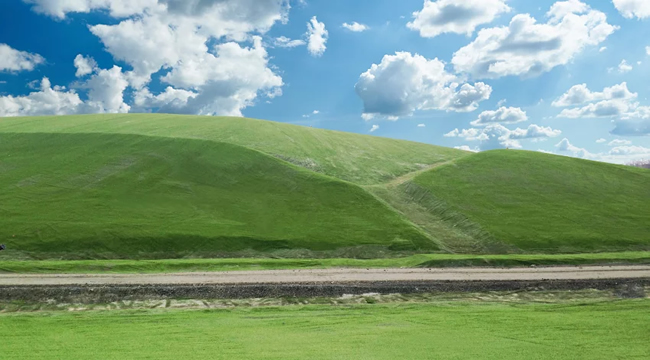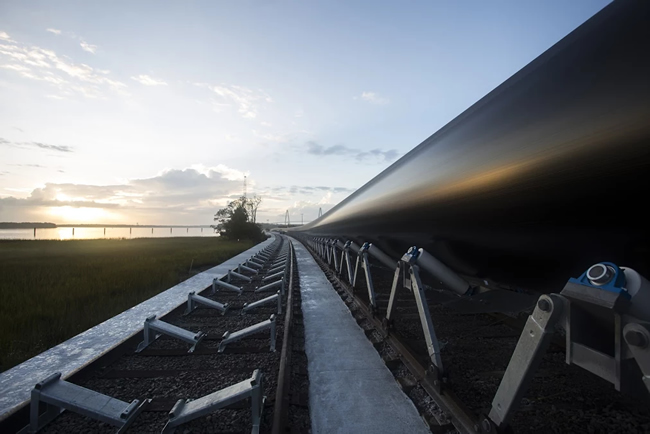Landfill engineering has advanced significantly over the past 35 years. Geosynthetic lining, capping, and final cover systems have had a lot to do with the tremendous success landfill operators have had in controlling leachate, protecting groundwater, and improving the long-term economics of active landfills and post-closure care periods. In regards to responsible closure of sites, one of the fastest growing geosynthetic systems being used on landfills has been the ClosureTurf® cover system.
We checked in with Chris Eichelberger of AGRU America about the long-term benefits of this system, how a decade of field data lines up with 100-year predictive data from lab testing, and other applications adopting this technology. We also get some details on the fascinating new plant the company has opened in Charleston, South Carolina, where they are extruding the largest diameter HDPE piping systems in the United States.
Listen to “The Rise of ClosureTurf® in Final Cover Systems” on Spreaker.
We thank AGRU America for its sponsorship of this episode.
The GeoTalk Podcast is released on Tuesdays. Recent episodes:
- The Coming Wave of Biogeotechnical Engineering
- The Push towards Reinvention in Geomembranes
- How RUSLE2 Benefits Ag, Mining, Urban Design, and Other Sectors
- Enhanced Wicking Geotextile Emerges from an Engineering Challenge
Subscribe on iTunes and in the Google Play store.
FINAL COVER SYSTEMS & CLOSURETURF®
ClosureTurf®, a Watershed Geo innovation, is a final cover system utilizing a geomembrane (from AGRU America) and a top layer of synthetic turf to create a natural-looking cover. The system provides strong cover for landfills and local agencies in regards to permanent erosion control, leachate management, stormwater cleanliness, and odor suppression.
“What the system offers to our market that’s very unique … is a predictable benchmark of performance,” Eichelberger says.
Traditional final covers were largely based upon a vegetation layer, but that layer was subject to heavy storms, drought, and other environmental challenges that create inconsistencies in vegetated cover performance. With a geosynthetic/synthetic turf cover, the system is consistent from site to site, region to region, regardless of the environment.

Furthermore, the infill of the cover system can be selected for specific types of environments in order to maximize performance with stormwater shedding rates, UV resistance, and more.
“ClosureTurf provides the environmental closure layer,” he says, “or what Subtitle D calls the infiltration layer, with that polyethylene geomembrane. But that second layer of the system also satisfies the Subtitle D requirement against erosion. … That’s the big difference that keeps this from being an ‘exposed system.’”
Among final cover systems, it’s more proper to think of ClosureTurf as a hybrid.
What about stability on slopes?
“In terms of anchoring, there’s nothing different or special about the anchoring of ClosureTurf,” Eichelberger says. “So if you have a 20 acre closure, you would simply have one perimeter anchor trench, or it would tie into an existing closure.”
With 2:1 slopes, an engineered factor of safety of 1.9 is readily available.
Regarding on-going R&D, Eichelberger says that durability continues to be of interest. The half-life of the engineered turf fibers—the only exposed element of these final cover systems—has been conservatively estimated by a third-party at more than 100 years. Ten years of field data is backing that analysis up.
LARGE-DIAMETER PIPE
Not to rest on just geomembrane products, AGRU is also growing steadily with large-diameter pipe solutions. During 2017, the company constructed a new manufacturing facility in Charleston, South Carolina. There, they can extrude 98-inch-diameter polyethylene pipes up to 2000 ft. in length. The pipe is extruded directly into the water for shipping.

It is a unique solution to being able to offer such large pipes at an economical rate for diverse infrastructure sector uses.
Listen to the full podcast for details.
For more information on ClosureTurf®, AGRU’s geosynthetic expertise, and the company’s new large-diameter pipe facility, visit www.agruamerica.com.











